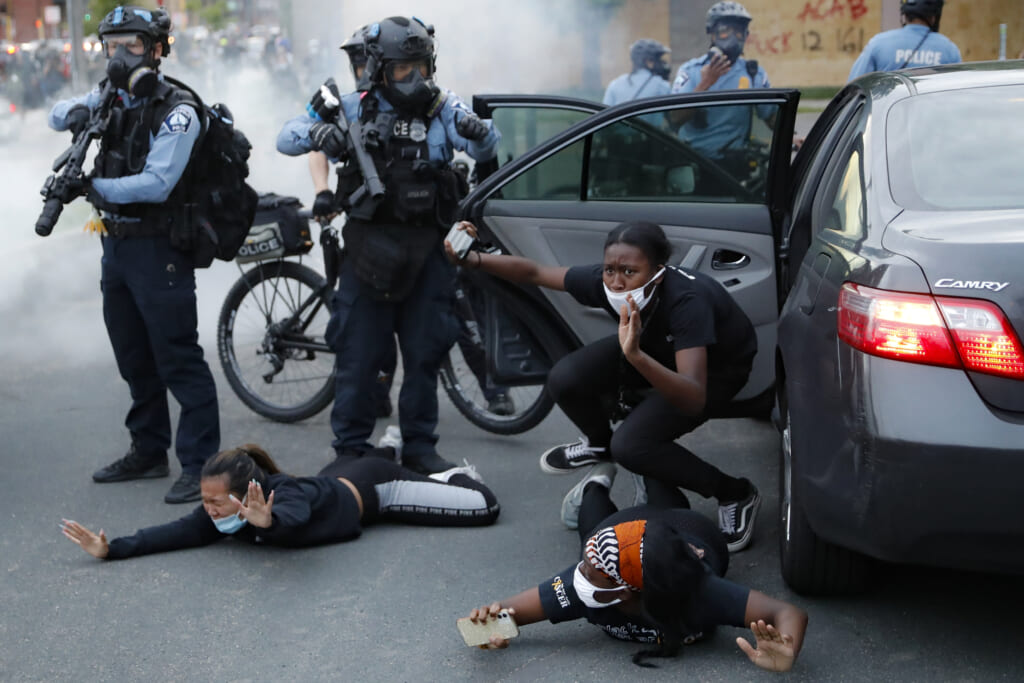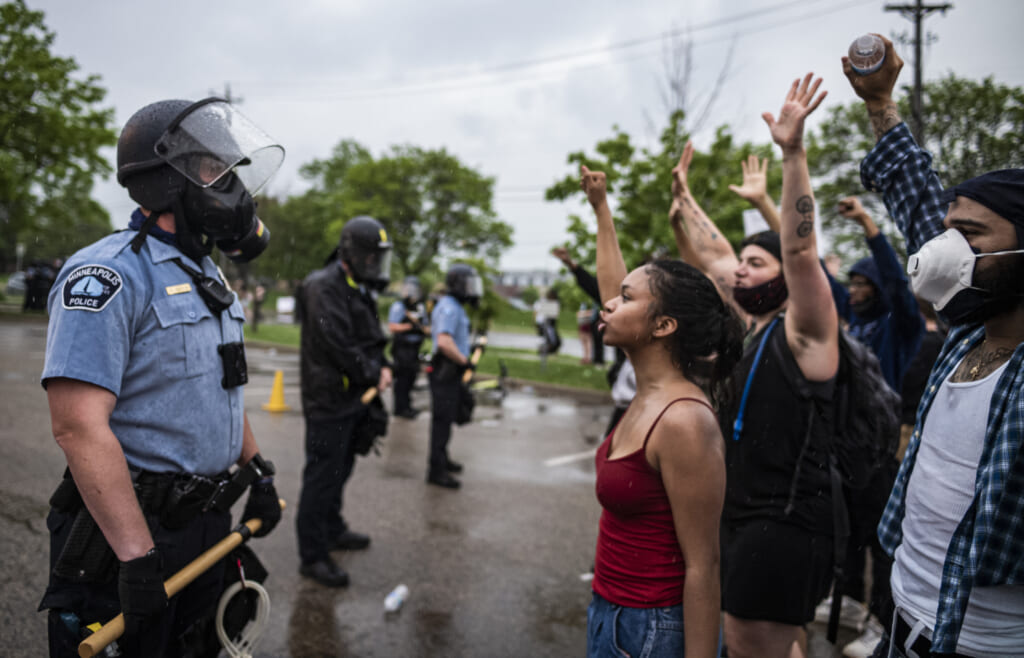State report details bias in Minneapolis Police Department
The Minnesota Department of Human Rights said Wednesday it will negotiate a court-enforceable agreement called a consent decree to address patterns of discrimination that have existed for at least 10 years.
ST. PAUL, Minn. (AP) — An extensive state investigation launched after the police killing of George Floyd in 2020 found that the Minneapolis Police Department has engaged in a pattern of race discrimination for at least the past decade.
The Minnesota Department of Human Rights said Wednesday it will negotiate a court-enforceable agreement called a consent decree with the city of Minneapolis to address the long list of problems identified in the report.
Here’s a look at some of the key findings and recommendations.
Patterns and practices
The agency found that the city and police department have engaged in a “pattern or practice” of race discrimination in violation of state law. Its report detailed evidence showing disparities in how officers use force, stop, search, arrest and cite people of color, particularly Black people, compared to white people in similar circumstances.

Police culture
The report said race-based policing in Minneapolis is primarily a result of police force culture. Officers, supervisors and trainers “receive deficient training, which emphasizes a paramilitary approach to policing that results in officers unnecessarily escalating encounters or using inappropriate levels of force,” it said.
The department’s accountability systems are “insufficient and ineffective at holding officers accountable for misconduct,” the report said. But it said former and current city and police leaders have failed to act, effectively allowing an aggressive culture to fester.
The report said the department maintains a culture where officers “consistently use racist, misogynistic, and disrespectful language and are rarely held accountable” for it.
“Without fundamental organizational culture changes, reforming MPD’s policies, procedures, and trainings will be meaningless,” the report said.
Use of force
The report found that officers use “higher rates of more severe force” against Black residents than white people in similar circumstances. Since 2010, 13 of the 14 people killed by Minneapolis officers were people of color or Indigenous. Those groups comprise about 42% of the city’s population, but 93% of the city’s officer-involved deaths since 2010. And while only about 19% of the city’s residents are Black, 63% of all use-of-force incidents were against Black people.
Traffic stops
The report found that Minneapolis officers are more likely to stop vehicles with people of color and Indigenous individuals, often for minor offenses. When stopped for either moving violations or no genuine reason at all, officers were more likely to ask them than white people if they had guns or drugs, and to search their vehicles without legal justification. And it said officers are more likely to use force against Black drivers in traffic stops, and to arrest them, than white motorists in similar circumstances.

Disorderly conduct
Minneapolis police improperly, excessively and disproportionately cite Black people for disorderly conduct and obstruction of the legal process, the report said. Community members told investigators it often happens “when officers are annoyed with or displeased with a community member’s reaction or response to a police officer’s presence.” Often the charges are dropped because they likely are unjustified, it said, while white people are more likely to get leniency. And it said the financial and other collateral costs of unjustified citations to Black people “can be substantial, and at times, devastating.”
Covert social media
The review found that police used “covert, or fake, social media accounts to surveil and engage Black individuals, Black organizations, and elected officials unrelated to criminal activity, without a public safety objective.” That included efforts to falsely engage with Black individuals and groups, including the NAACP and Urban League, often using “language to further racial stereotypes associated with Black people, especially Black women.” Police also used covert accounts to criticize elected officials, including an unnamed City Council member and an unnamed state elected official.
In contrast, the report said, officers did not track and surveil white people in cases unrelated to criminal activity, and did not use covert social media accounts to track white supremacist or white nationalist groups.
Recommendations
The city and police department don’t need to wait for the planned consent decree that the two sides will negotiate, the report said. The Human Rights Department proposed three immediate steps to take. The first was a series of measures to improve accountability and oversight, including a reset of performance expectations, better investigations of alleged misconduct, and better coaching of officers in need of improvement. Second, the report urged the department to quickly overhaul its training to shift from a paramilitary to a public service approach. And it said leaders must “communicate honestly” when critical incidents such as officer-involved shootings arise.
TheGrio is FREE on your TV via Apple TV, Amazon Fire, Roku and Android TV. Also, please download theGrio mobile apps today!
More About:News



